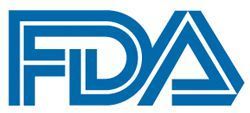NDA Resubmitted to FDA for Pedmark in Prevention of Platinum-Induced Ototoxicity in Solid Tumors
A new drug application for a unique formulation of sodium thiosulfate was resubmitted to the FDA for the second time for the prevention of platinum-induced ototoxicity in patients between the ages of 1 month and 18 years who have localized, nonmetastatic, solid tumors.
FDA

A new drug application (NDA) for a unique formulation of sodium thiosulfate (Pedmark) was resubmitted to the FDA for the second time for the prevention of platinum-induced ototoxicity in patients between the ages of 1 month and 18 years who have localized, nonmetastatic, solid tumors.1
Pedmark received breakthrough therapy and fast track designations from the FDA in March of 2018. Following the first NDA submission for Pedmark, the FDA issued a complete response letter (CRL) to Fennec Pharmaceuticals, the drug developer, in August 2020, resulting in a Form 483, which comprised a list of conditions or practices that would need to be addressed prior to the approval of the agent.
The FDA accepted an initial NDA resubmission for Pedmark in June 2021. The FDA issued a second CRL to Fennec Pharmaceuticals in November 2021 after identifying manufacturing deficiencies that would need to be satisfactorily resolved before the Pedmark NDA could be approved.2
“We appreciate the FDA’s comments during the resubmission process and look forward to working closing with the Agency during the NDA review,” Rosty Raykov, chief executive officer of Fennec Pharmaceuticals, said in a press release. “We are pleased to have reached this important step and Fennec remains committed to making Pedmark available to reduce the risk of cisplatin-induced ototoxicity in pediatric patients.”
The phase 3 Clinical Oncology Group (COG) Protocol ACCL0431 (NCT00716976) and SIOPEL 6 (NCT00652132) trials investigated sodium thiosulfate in pediatric patients for the prevention of hearing loss associated with cisplatin-based chemotherapy.
The COG ACCL0431 trial enrolled pediatric patients with newly diagnosed cancer and normal audiometry. Investigators set out to examine how effective sodium thiosulfate was in preventing cisplatin-induced hearing loss. Preclinical studies in animals showed timed administration of sodium thiosulfate could prevent cisplatin-induced hearing loss without disrupting the antitumor effects of chemotherapy.
Among 125 patients who were enrolled to the trial, 32 had germ cell tumor, 29 had osteosarcoma, 26 had neuroblastoma, 26 had medulloblastoma, 7 had hepatoblastoma, and 5 had other cancers that had not been specifically defined. Additionally, 104 of these patients were found to be evaluable for the primary end point analysis of incidence of hearing loss 4 weeks after the final cisplatin dose. Most of the participants were male (64%), and 29 patients were under the age of 5 years.3
Participants were randomized to either intravenous (IV) administration of sodium thiosulfate at a dose of 16 mg/m2 over a duration of 15 minutes, 6 hours following each dose of cisplatin, or placebo. Investigators measured hearing by utilizing the standard audiometry for age; these data were centrally reviewed in accordance with the American Speech-Language-Hearing Association criteria.
Data indicated 28.6% (95% CI, 16.6%-43.3%) of patients in the sodium thiosulfate arm experienced hearing loss compared with 56.4% (95% CI, 42.3%-69.7%) in the placebo arm (P = .00022).
The SIOPEL 6 trial investigated the efficacy and safety of sodium thiosulfate to reduce cisplatin-induced hearing loss in patients with newly diagnosed, standard-risk hepatoblastoma, and the key objective focused on an absolute hearing threshold of 3.5 years of age or older per central review and the use of pure tone audiometry, which was graded by Brock criteria.
In SIOPEL 6, patients were given 4 courses of chemotherapy on a biweekly basis before surgery, followed by 2 courses of adjuvant chemotherapy. Overall, 109 patients were randomized to cisplatin followed by sodium thiosulfate (n = 57) or cisplatin alone (n = 52).4
Patients received cisplatin at an IV dose of 10 mg/m2 over a duration of 6 hours. Patients were given sodium thiosulfate via IV administration every 6 hours after cisplatin was stopped; the investigative agent was given at a dose of 20 mg/m2 over the course of 15 minutes.
At a median of 52 months of follow-up, the 3-year event free survival rate achieved with sodium thiosulfate was 82% vs 79% with cisplatin alone. Additionally, the overall survival rates in the sodium thiosulfate and control arms were 98% and 92%, respectively.
Treatment failure was defined as experiencing disease progression at 4 cycles of treatment; rates of this were reported to be equivalent between the 2 arms. Among the 101 evaluable patients, the rate of hearing loss was almost halved with sodium thiosulfate compared with cisplatin alone, at 33% vs 63%, indicating a 48% reduction in the risk of hearing loss in the cisplatin-sodium thiosulfate group (relative risk, 0.52; 95% CI, 0.33-0.81; P = .002)
The European Medicines Agency is currently evaluating the marketing authorization application for Pedmark.
References
- Fennec Pharmaceuticals resubmits new drug application to U.S. Food and Drug Administration for Pedmark. News release. Fennec Pharmaceuticals. March 24, 2022. Accessed March 24, 2022. https://bit.ly/3JFXOIu
- Fennec Pharmaceuticals receives complete response letter from the FDA for its new drug application for PEDMARK to prevent ototoxicity associated with cisplatin in pediatric patients with localized, non-metastatic, solid tumors. News release. Fennec Pharmaceuticals. November 30, 2021. Accessed March 24, 2022. https://bit.ly/3izYcwq
- Freyer DR, Chen L, Krailo MD, et al. Effects of sodium thiosulfate versus observation on development of cisplatin-induced hearing loss in children with cancer (ACCL0431): a multicentre, randomised, controlled, open-label, phase 3 trial. Lancet Oncol. 2017;18(1):63-74. doi:10.1016/S1470-2045(16)30625-8
- Brock PR, Maibach R, Childs M, et al. Sodium thiosulfate for protection from cisplatin-induced hearing loss. N Engl J Med. 2018;378(25):2376-2385. doi:10.1056/NEJMoa1801109



